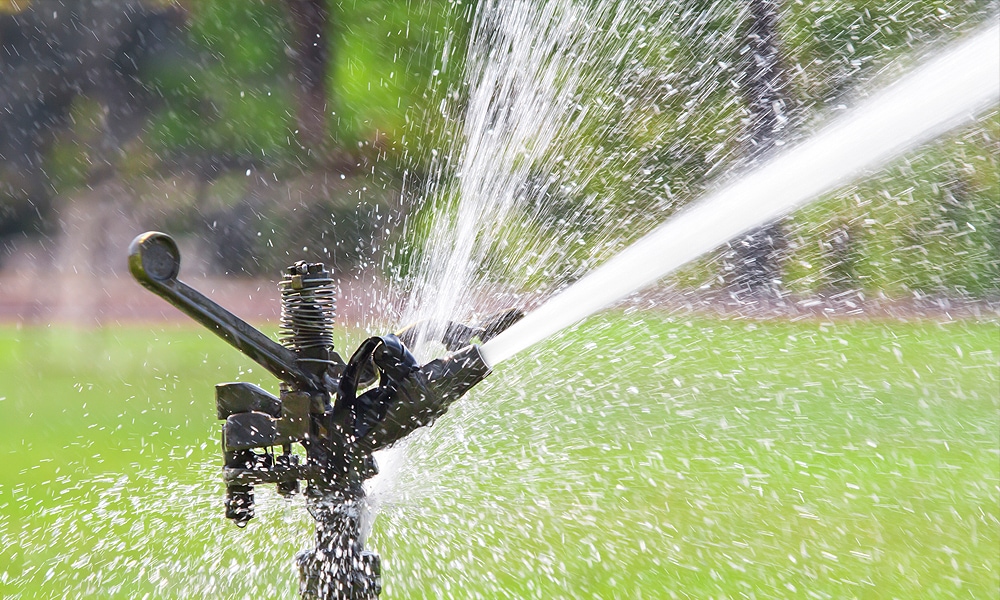When birds invade your garden, they often bring unwelcome trouble. From pecking at seeds to damaging plants and fruits, the presence of birds can turn a thriving garden into a battleground. Fortunately, motion-activated sprinklers offer an effective solution to this problem.
Motion-Activated Sprinklers
Motion-activated sprinklers are designed to detect movement and respond with a burst of water. These sprinklers are equipped with motion sensors that can detect even the slightest movement within their range. When activated, the sprinkler releases a quick and surprising jet of water, startling birds and encouraging them to fly away. The system typically consists of a motion detector, a water nozzle, and a sprinkler head, all integrated into a single unit.
There are several types of motion-activated sprinklers. Basic models are often simple to install and use, while advanced models may come with additional features such as adjustable sensitivity, range settings, and even multiple spray patterns. Choosing the right model depends on your garden’s size, the types of birds you are dealing with, and your specific deterrent needs.
Advantages of Using Motion-Activated Sprinklers
Motion-activated sprinklers are not only effective but also eco-friendly and humane. Unlike chemical deterrents or bird traps, these sprinklers do not harm the birds. They simply use water to create a deterrent effect. They are an energy-efficient solution as they only use water when necessary. Sprinklers do not require continuous monitoring or manual intervention.
Setting Up Motion-Activated Sprinklers in Your Garden
Place the motion-activated sprinklers strategically around your garden. Position them in areas where birds are most likely to land or forage, such as near fruit trees, or garden beds. Ensure that the sensors have an unobstructed view to detect any movement effectively.
Installing a motion-activated sprinkler is generally straightforward. Begin connecting the sprinkler to a garden hose. Then, choose a stable spot for the unit, ensuring it is securely anchored to prevent tipping over. Most models come with stakes or mounting brackets to aid in installation. Once positioned, adjust the angle of the sprinkler to cover the desired area.
Fine-tuning the sensitivity and range of your motion-activated sprinkler is essential for optimal performance. The sensitivity setting controls how easily the sensor detects movement, while the range setting determines the area covered the sprinkler. Adjust these settings based on the size of the area you want to protect and the typical behavior of the birds you’re targeting.
Maximizing the Effectiveness of Motion-Activated Sprinklers
While motion-activated sprinklers are effective on their own, combining them with other bird deterrents can enhance their effectiveness. Reflective materials, such as aluminum foil or reflective tape, can be used to create additional visual deterrents. Decoys like plastic owls or hawks can also reinforce the message that the garden is not a safe place for birds. You can find a wide selection of bird deterrents and repellents at Birdusters online store.
Understanding bird behavior is key to timing your sprinkler use effectively. For instance, bird migration periods or breeding seasons might influence when birds are most active in your garden. Adjust your sprinkler settings and activation times accordingly to maximize their deterrent effect.
Maintain your sprinkler to ensure its longevity and efficiency. Check for clogs in the water nozzle and ensure the motion sensors are free from obstructions. Periodically test the system to confirm that it is functioning correctly.
Potential Challenges and Solutions
False activations can be a common issue, often triggered wind, small animals, or even passing vehicles. To minimize false alarms, adjust the sensitivity of the motion sensors to avoid picking up non-targeted movements. Additionally, ensure that the sensor’s detection area is properly aligned with the intended target zones.
To address concerns about water usage, consider using a timer or a motion-activated sprinkler with a limited spray duration. This helps to conserve water while still providing effective deterrence. Also, ensure that the sprinkler system is only activated when needed to avoid unnecessary water consumption.
To protect delicate plants from the high pressure of the water jets, position the sprinkler heads at a distance from such plants. Consider using shields or barriers to redirect water flow away from sensitive areas.
Conclusion
Motion-activated sprinklers offer a humane, effective, and eco-friendly solution for keeping birds out of your garden. By using these devices, you can protect your garden from avian intruders. Consider incorporating motion-activated sprinklers into your bird deterrent strategy.




